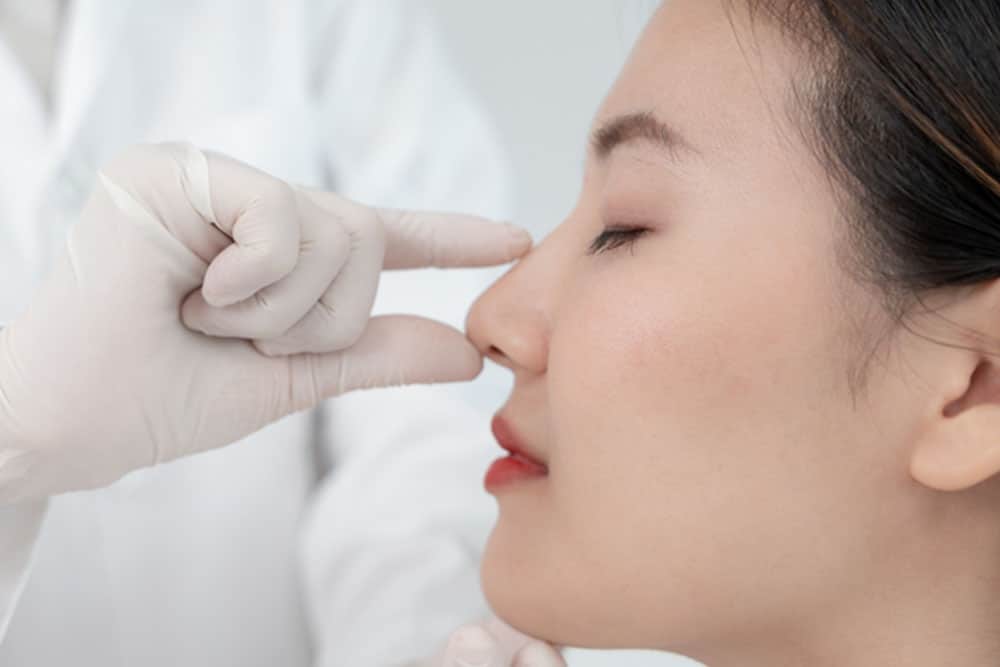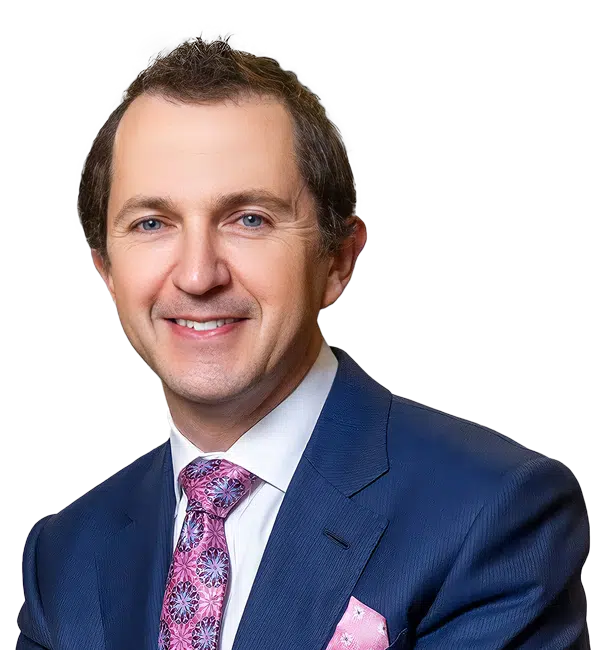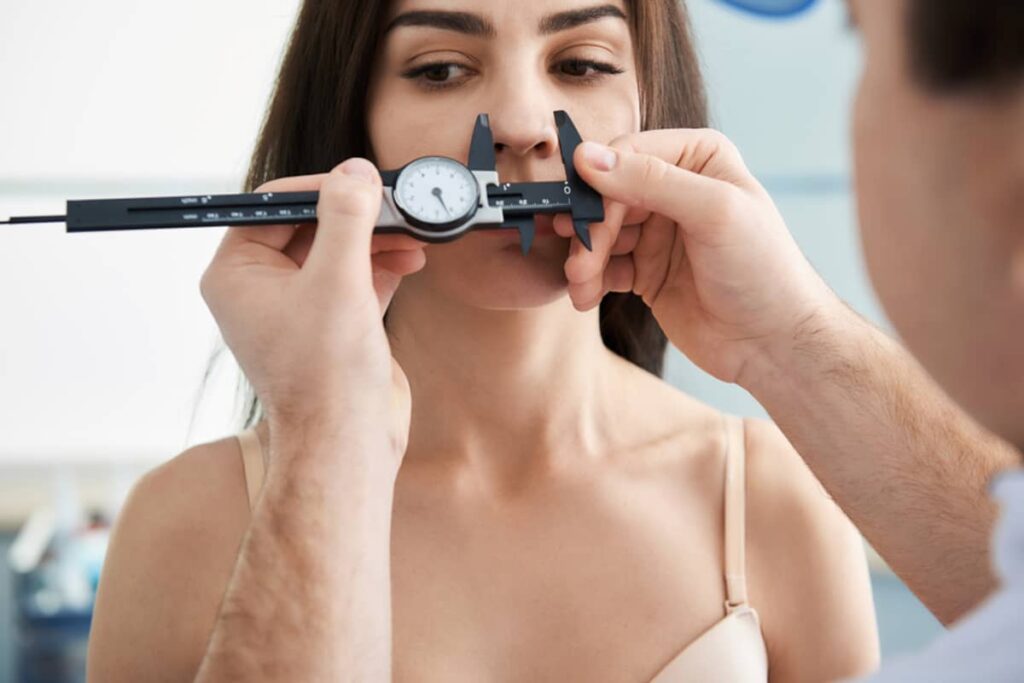Those who want to fix problems with their former nose operation must first choose a revision rhinoplasty surgeon. Maybe your first surgery produced unsatisfactory results, or problems developed over time following surgery. In either case, double-board-certified facial plastic surgeon Dr. Alexander Donath offers thorough advice on elements to be taken into account while choosing the best revision rhinoplasty surgeon. Knowing these factors will help you to boldly decide on your secondary rhinoplasty.

Before Choosing a Revision Rhinoplasty Surgeon
What Are Your Specific Needs?
Revision rhinoplasty has different needs for each person and is often more complicated than the first rhinoplasty. Some people may get it to fix useful problems, like nose breathing problems, while others may want it more for cosmetic reasons. Figure out what you need before you start looking for the best revision rhinoplasty surgeon.
Your medical history and previous nose surgeries are critical in this regard. Specialists consider these factors when evaluating candidates for revision rhinoplasty. Knowing your needs can help tailor your revision rhinoplasty procedure.
Why Did Your Previous Rhinoplasty Fail?
Understanding the factors behind the shortcomings of your primary rhinoplasty is crucial, whether it’s due to surgical technique, poor healing, or other issues. Revision rhinoplasty patients must communicate these concerns to their surgeon to ensure a successful outcome.
Comprehensive evaluation of the initial surgery’s techniques, outcomes, and complications is necessary for planning the revision procedure effectively. By addressing these factors, patients can achieve the desired nasal shape and function, avoiding the need for further revision surgeries.
Considerations for Choosing a Revision Rhinoplasty Surgeon
If you want your revision rhinoplasty to turn out perfectly, you need to choose the right specialist. Experience with prior procedures, particularly primary rhinoplasty, is crucial due to the complexity of this procedure. Sufficient knowledge of complex surgical procedures, including the use of cartilage grafts to alter the shape of the nose and enhance its functionality, as well as revision cases, is required. If you want a personalized solution to problems like bad healing or irregular nasal shape, you need to know the ins and outs of nasal anatomy and function. A successful outcome also depends on the surgeon’s expertise with the recovery time and any problems that may have arisen from prior surgery. The likelihood of achieving the ideal nasal aesthetics and functioning post-revision is enhanced when you invest in the correct surgeon, who minimizes the risk of bad outcomes.
1. Qualifications and Certifications
A facial plastic surgeon who has passed the rigorous board certification process should be your first choice. In what ways does this matter? Surgeons that are board certified in facial plastic surgery have demonstrated mastery of all aspects of the field, including the intricate anatomy of the nose and nasal septum.
This is different from general plastic surgeons who might not have specialized training in these areas. In a delicate procedure like this, technical skills matter. Look out for designations like “double board-certified facial plastic surgeon” to ensure you’re getting the best care possible.
2. Experience and Expertise
It is common for a secondary rhinoplasty to be more difficult than the first one. Because of this, the therapist you pick should have a lot of experience with difficult cases. But years of experience aren’t the only way to measure it. Find out how many correction surgeries they’ve done and see if they have before and after pictures to show how good they are.
3. Patient Reviews and Testimonials
Feedback from people who have had rhinoplasty before is one of the best ways to tell how skilled a surgeon is. Go to websites where other patients talk about their experiences and look for reviews that are specifically about redo rhinoplasty. Testimonials from past patients can help you know what to expect, not only in terms of how skilled the surgeon is, but also in terms of how they treat you during and after the surgery.
4. Before and After Gallery
Before and after photographs are visual testimony to a surgeon’s work. They provide information about the surgeon’s aesthetic approach and technical abilities. Pay special attention to patients who have experienced similar concerns as you, since this will give you an indication of what to expect.
5. Consultation Appointment
A private meeting gives you a chance to see if the surgeon is a good fit. Talk about your medical history, why you want to have revision rhinoplasty, and your goals at this appointment. The doctor should give you a personalized plan for the surgery and be willing to answer all of your questions. Before you leave the meeting, make sure you know a lot about your potential surgeon and feel comfortable with them.
6. Facility and Staff
Finally, take note of the facility where the revision rhinoplasty will take place. It should be well-equipped and adhere to safety standards. The staff should be professional and courteous, as they’ll be a part of your experience from start to finish.

Other Factors to Consider Before Second Rhinoplasty
How Much Will It Cost?
As a result of being more complicated, revision rhinoplasty, which is done after an initial rhinoplasty, usually costs more. To make an informed choice, you need to know how much it will cost and what kinds of insurance might cover it. Even though fees can be different, it is very important to put experience over cost, since skilled doctors can get better results even if they charge more.
What Is the Recovery Process?
Recovery is an important but often forgotten part. You should talk to your surgeon ahead of time about painkillers, follow-up visits, and the time you will need to take off from work and social activities.
Also, for a few weeks after the surgery, you shouldn’t do anything particularly taxing, including moving large objects or engaging in vigorous physical activity. Make sure you know everything there is to know about the recovery process.
What About Anesthesia and Medications?
It’s essential to understand what type of anesthesia will be used and the potential medications you might need post-operatively. Often, the surgery is conducted on an outpatient basis, and you’ll need someone to drive you home.
Make sure to disclose any allergies or past issues with anesthesia or medications during your consultation appointment. This information will help your surgeon adjust your surgical plan accordingly.
Are There Risks Involved?
Any surgical procedure comes with risks. Scarring, anesthesia complications, and unsatisfactory results are some of them. Discuss these risks at length with your surgeon to weigh them against the benefits.
Remember, every operation leaves scars, but a skilled revision rhinoplasty specialist should minimize this issue through specialized procedures and advanced techniques.
How Comfortable Are You With the Surgeon?
Your comfort level with the surgeon is paramount. During your consultation, assess how well the surgeon addresses your concerns, explains the process, and outlines recovery time.
Remember, this is not just about their medical expertise but also their ability to communicate effectively and make you feel at ease.
What Are the Alternatives?
Considering previous surgery, particularly primary rhinoplasty, and the potential need for revision rhinoplasty surgery, patients face a complex decision-making process. Revision rhinoplasty, a more intricate procedure involving cartilage grafts and nasal airway correction, addresses issues stemming from the original surgery. Despite its higher costs compared to the initial procedure, it aims to rectify poor outcomes and restore both nasal function and shape. However, recovery from revision rhinoplasty can be more challenging due to factors like poor healing from previous surgery and the intricacies of correcting prior alterations.
While alternative treatments such as septoplasty or filler injections may offer temporary relief for minor concerns, they often fall short in addressing the underlying issues of a botched nose job. Ultimately, patients must weigh the potential benefits and risks, understanding that achieving the perfect nose may necessitate the investment in revision rhinoplasty.
As you finish reading, remember that choosing the right revision rhinoplasty surgeon is the first step to reclaiming your confidence and resolving the issues you’ve faced since your initial nose job. So don’t hesitate to schedule your appointment with Dr. Alexander Donath today for a life-changing experience.

